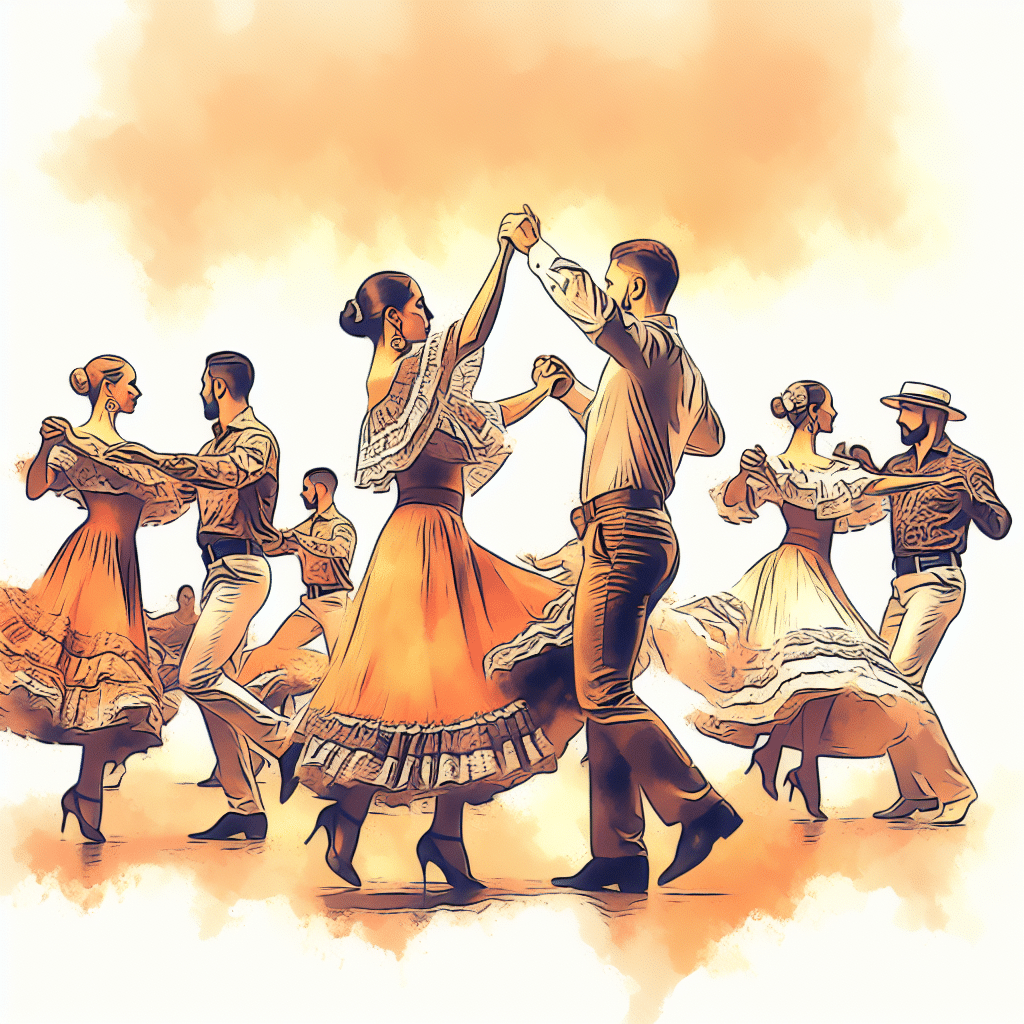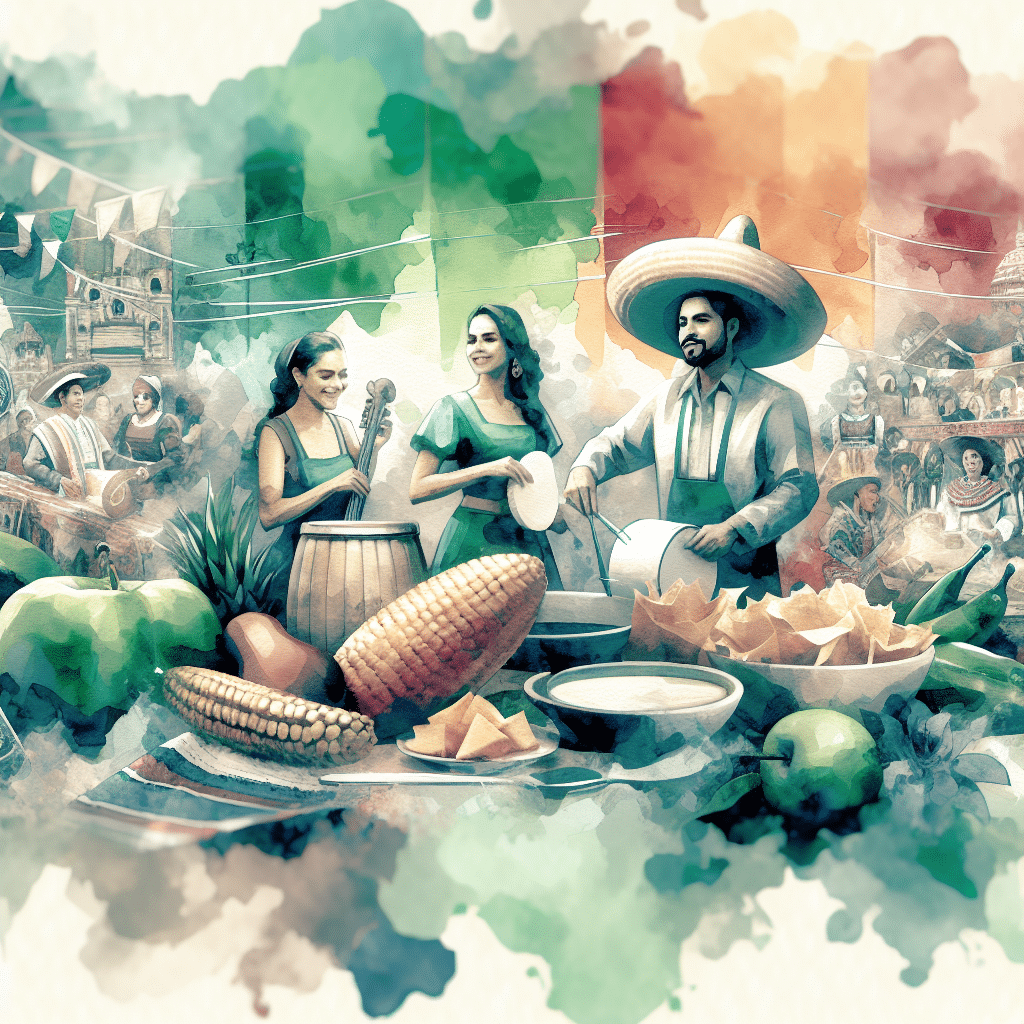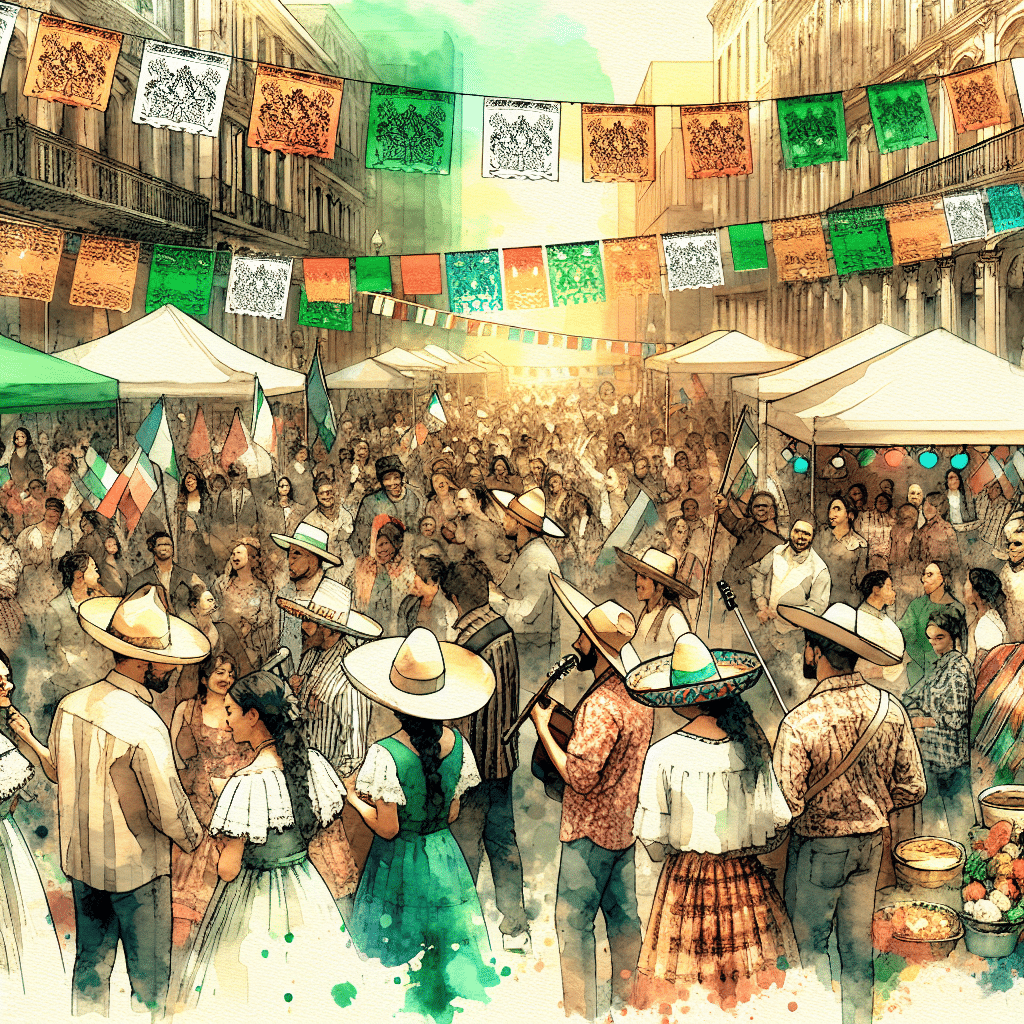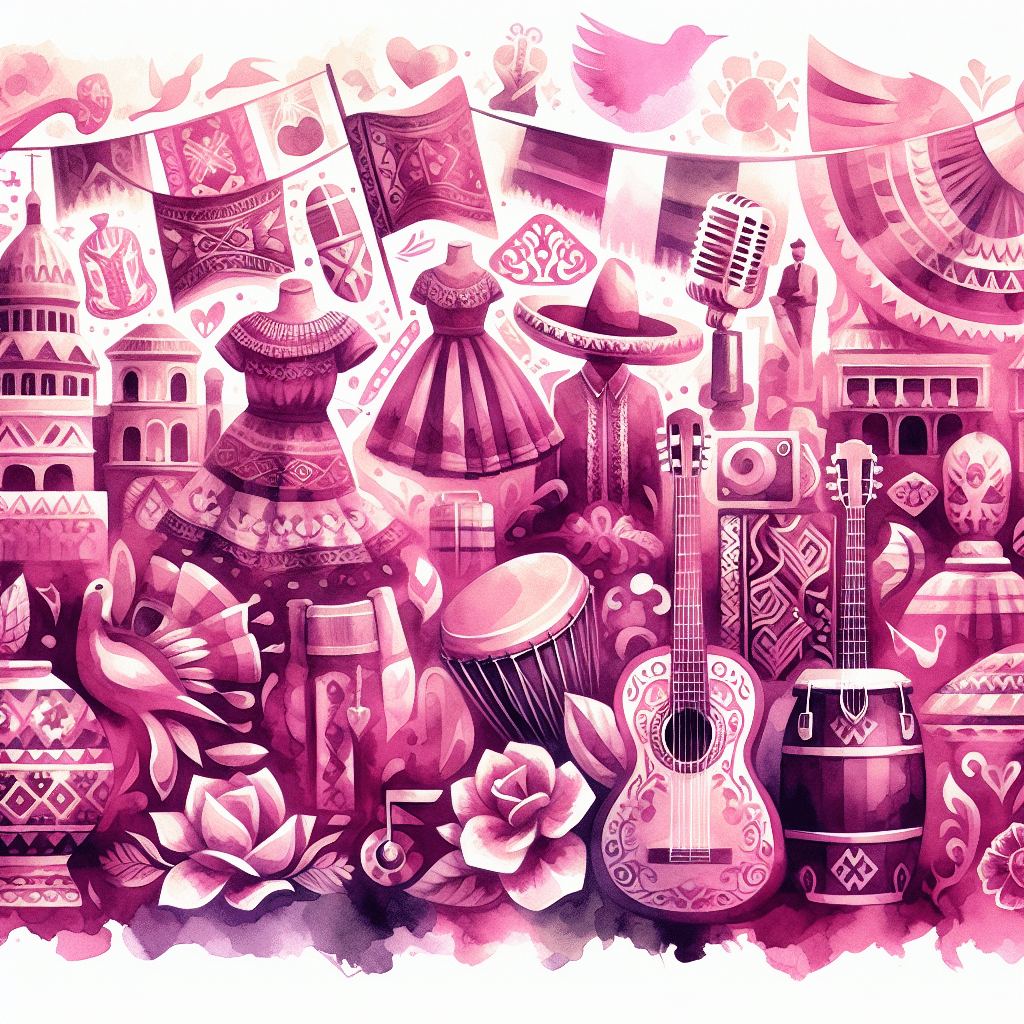
Latin American Dance Origins: A Fusion of Culture and Rhythm
Latin American Dance Origins
Latin American dance is a lively mix of indigenous, African, and European influences. These dances have changed over time, showing off the rich culture of the region.
Influences and Evolution
Latin American dance is like a big stew with lots of different ingredients. Native dances, African rhythms brought by enslaved people, and European styles all mixed together to create unique dance forms. Over time, each country started to put its own spin on these dances, especially from the 19th century onwards.
Key Influences:
- Indigenous: Native dances often had spiritual and ceremonial significance.
- African: Rhythms and movements introduced by enslaved Africans added a distinct energy.
- European: Colonizers brought their own dance traditions, which were mixed into local practices.
This blend of influences gave rise to a variety of dance styles, each with its own flavor. For example, the Roman Catholic Church played a big role in cultural changes through religious music, dance, and festivals (Britannica). Carnival celebrations in Roman Catholic countries feature lively group dances, letting people forget their daily worries for a while.
Aztec Dance Traditions
The Aztec civilization had its own rich dance traditions that were precisely structured and executed. Male dancers often acted out battles between gods or military units. Some dances lasted more than a day to test the endurance and commitment of warrior-dancers.
| Aspect | Description |
|---|---|
| Structure | Precisely structured, often enacting mythological or military themes |
| Duration | Could last more than a day, testing endurance |
| Participants | Primarily male dancers |
These dances were not just performances but were deeply rooted in the cultural and religious practices of the Aztecs. The endurance and commitment required for these dances showcased the strength and resilience of the participants.
For more insights on the rich traditions and customs of Latin America, check out our articles on latino traditions and customs and hispanic culture and traditions.
By understanding the origins and influences of traditional Latin dances, one can appreciate the rich cultural heritage that these dances represent. They are a testament to the resilience and creativity of the Latino community, celebrated through movement and rhythm.
European Influence on Latin Dances
Fancy Footwork from Europe
Imagine this: European upper-class immigrants, decked out in their finest, waltzing into Latin America and shaking things up on the dance floor. These stylish folks brought along their trendy social dances, which quickly caught the eye of Latin American society.
They introduced open-couple dances like the minuet, allemande, and sarabande, which were all the rage in European high society. But they didn’t stop there. They also brought interdependent-couple dances like the contradanza and its variations. Picture elegant couples gliding across grand ballrooms, setting a trend that would soon sweep across Latin America.
These dances didn’t stay confined to the upper crust. They trickled down through the social classes, becoming popular across different regions and social strata. Before long, these dances, infused with European and African influences, became a staple in Latin American culture.
Dance Floor Revolution
The impact of these European social dances on Latin American culture was huge. They didn’t just bring new moves; they brought a whole new social vibe. The introduction of closed-couple dances like the waltz, schottische, and polka created chances for more intimate and interactive dance experiences (Britannica).
| Dance Type | Origin | Influence |
|---|---|---|
| Minuet | Europe | Upper-Class Society |
| Allemande | Europe | Upper-Class Society |
| Sarabande | Europe | Upper-Class Society |
| Contradanza | Europe | All Social Classes |
| Waltz | Europe | Intimate Dance Experience |
| Schottische | Europe | Social Interaction |
| Polka | Europe | Social Interaction |
These dances became a social equalizer, letting people from different backgrounds come together and celebrate through dance. The contradanza, in particular, became a cultural hit, evolving into various regional styles and staying popular well into the early 21st century.
The mix of European and African elements in these dances also added to the rich tapestry of Hispanic culture and traditions. It paved the way for the unique Latin American dance forms we celebrate today.
For more on how these dances evolved and influenced modern Latin American dance, check out our articles on latino community celebrations and latino cultural events.
Flamenco: A Spanish Icon
Flamenco isn’t just a dance; it’s the heartbeat of Southern Spain. Let’s take a closer look at where it all began and how it evolved into the fiery art form we know today.
Flamenco Origins
Flamenco’s roots are as tangled as a soap opera plot. It sprang from a mix of Indian, Arabic, and Spanish cultures, making it a true melting pot (Latin Ballet). The dance started as a form of personal expression for gypsies and other oppressed groups during the Spanish Inquisition. It was their way of shouting, “We’re still here, and we’re fabulous!” The Roma, or gypsies, were key players in its development, infusing it with the flair and rebellious spirit we see today.
Flamenco isn’t just about fancy footwork and dramatic hand claps. It’s a raw, emotional expression that combines cante (song), baile (dance), and toque (musicianship) (Latin Ballet). This trio creates a performance as intricate and captivating as the twists in your favorite telenovela.
Evolution and Recognition
Flamenco has morphed over centuries, soaking up influences from Greek, Roman, Moorish, Jewish, and Andalusian traditions. Think of it as the ultimate remix, blending diverse elements into a unique and powerful art form. Flamenco is performed during religious festivals, church ceremonies, and private celebrations, making it a staple in Spanish life.
In 2010, UNESCO gave Flamenco the thumbs-up and added it to its list of “Intangible” Cultural Heritage (Latin Ballet). This recognition put Flamenco on the global stage as a symbol of Spanish culture, especially in Andalusia. It has become a badge of identity for many communities, particularly the Gitano (Roma) ethnic group.
For those itching to experience Flamenco firsthand, it’s performed at various latino cultural events and latin film festivals. Don’t miss out on this passionate display of cultural heritage.
| Element | Description |
|---|---|
| Cante (Song) | The vocal heart of Flamenco, often brimming with deep emotion. |
| Baile (Dance) | The physical expression, marked by intricate footwork and hand movements. |
| Toque (Musicianship) | The musical backbone, usually featuring guitar and percussion. |
Flamenco isn’t just a dance; it’s a lifestyle, an attitude, and a cultural phenomenon that continues to captivate audiences worldwide. Whether you’re celebrating Hispanic Heritage Month or just looking to add some flair to your life, Flamenco is the dance that says, “I’ve arrived, and I’m here to stay!”
Traditional Latino Dances
Folklorico Dance
Folklorico, the granddaddy of traditional Latino dances, is a vibrant and colorful display of Mexico‘s rich cultural heritage. Think swirling skirts, stomping heels, and enough color to make a rainbow jealous. One of the most recognizable examples is the Ballet Folklorico of Mexico, performed on special occasions and often accompanied by the iconic sounds of mariachi music (DFNTLY Entertainment). This dance isn’t just a feast for the eyes; it’s a cultural smorgasbord that tells the stories of Mexican history, from indigenous roots to Spanish colonial influences.
If you’ve ever caught yourself admiring the intricate footwork and dazzling costumes of Folklorico dancers, you’re not alone. This dance style has captivated audiences around the world, making it a staple at Latino cultural events and Hispanic Heritage Month celebrations. Whether you’re a seasoned dancer or someone who trips over their own feet, Folklorico welcomes you with open arms and twirling skirts.
Cumbia Dance Heritage
Cumbia, the heartthrob of Colombian dance, started as a courtship dance among the Indigenous population on the Caribbean coasts in the 1800s. Imagine a love story told through dance, where every step and sway is a flirtatious glance. Over time, Cumbia evolved, incorporating African and European instruments, steps, and musical characteristics. By the 1970s, Mexican Cumbia music had taken the world by storm, with artists like Selena y Los Dinos injecting a youthful rhythm into the genre in the 1980s.
Cumbia isn’t just a dance; it’s a cultural phenomenon that has spread across Latin America and beyond. The infectious rhythm and simple steps make it accessible to everyone, from professional dancers to your abuelita who loves to bust a move at Latino community celebrations. If you’re looking to embrace your cultural roots while showcasing your dance skills, Cumbia is your go-to groove.
For a quick comparison of these traditional dances:
| Dance Style | Origin | Key Features | Popular Events |
|---|---|---|---|
| Folklorico | Mexico | Colorful costumes, stomping heels, mariachi music | Latino cultural events, Hispanic Heritage Month |
| Cumbia | Colombia | Courtship dance, African and European influences, rhythmic beats | Latino community celebrations, Latino heritage month |
These traditional Latino dances are more than just steps and rhythms; they are expressions of cultural identity and heritage. By embracing Folklorico and Cumbia, you’re not just dancing; you’re celebrating a rich tapestry of history, tradition, and joy. So, the next time you find yourself at a Latino festival, let loose and dance like no one’s watching!
Popular Latin Dances
Ready to dance like no one’s watching? Latin dances bring the heat! Let’s jump into the spicy world of Salsa, Bachata, and Merengue.
Salsa Dance Evolution
Salsa is a dance melting pot, with roots going back to the 1940s. It evolved from Cuban dance forms like Son, Son Montuno, cha cha cha, Mambo, and Puerto Rican Bomba and Plena. Salsa’s rhythmic beats and lively steps have made it a favorite in the Caribbean, Latin America, and Latino communities in New York.
Different regions have their own salsa styles, including Cuban, Puerto Rican, Cali Colombia, L.A., and New York styles. And let’s not forget the Afro-Caribbean dances like Pachanga that have influenced Salsa. Whether you’re into intricate footwork or smooth, flowing movements, there’s a salsa style for you.
| Salsa Style | Origin |
|---|---|
| Cuban Salsa | Cuba |
| Puerto Rican Salsa | Puerto Rico |
| Cali Salsa | Colombia |
| L.A. Salsa | Los Angeles, USA |
| New York Salsa | New York, USA |
For more on Hispanic Heritage Month and activities, check out our detailed guides.
Bachata and Merengue Styles
Bachata and Merengue are the dynamic duo of Dominican dance.
Bachata
Born in the Dominican Republic during the 1960s, Bachata dance is deeply rooted in the music of the same name. It thrived in bars and brothels before gaining mainstream popularity. Bachata has grown and thrived globally, evolving into a dance that is widely accepted and loved. With its close embrace and romantic flair, it’s no wonder Bachata has captured hearts worldwide.
Merengue
Merengue, another gem from the Dominican Republic, is a lively couple dance with a rich history. Dictator Rafael Trujillo declared it the Dominican official dance and musical style after his rise to power in the 1930s (DanceUs.org). Merengue’s simple, quick steps and upbeat tempo make it a favorite dance at Latino parties and celebrations.
| Dance Style | Origin | Characteristics |
|---|---|---|
| Bachata | Dominican Republic | Romantic, close embrace |
| Merengue | Dominican Republic | Lively, quick steps |
Learn more about Latino Heritage Month and how these dances play a role in Latino community celebrations.
So, whether you’re twirling to the rhythm of Salsa or swaying to the beats of Bachata and Merengue, these traditional Latino dances are sure to bring joy and a touch of cultural heritage to your life. For more on Hispanic culture and traditions and Latino cultural events, explore our comprehensive articles.
Argentine Tango and More
Tango Roots and Variations
Tango, the steamy dance of passion, kicked off in the 1880s along the River Plate, the natural border between Argentina and Uruguay. Picture this: back then, it was all about the brothels and bars of port cities. Imagine sailors and ladies of the night swaying to the rhythm in dimly lit rooms. Fast forward to today, tango has spread its wings worldwide, morphing into various styles and captivating hearts everywhere.
The tango made its grand entrance into Europe around 1911, seducing the high society of Paris, London, and Berlin. Nowadays, tango communities thrive across the globe, with the biggest ones in Buenos Aires, New York, and Seattle (DanceUs.org). From the traditional Argentine Tango to the ballroom style, this dance has variations that suit everyone from seasoned dancers to those just trying not to trip over their own feet.
| Location | Major Tango Communities |
|---|---|
| Buenos Aires | 50,000+ dancers |
| New York | 20,000+ dancers |
| Seattle | 10,000+ dancers |
Mambo Dance Sensations
Now, let’s switch gears and talk about the Mambo. This dance hails from Cuba and saw its rise in the 1940s. Think of Mambo as the lovechild of rumba and cha-cha, but with a lot more sass. Known for its vibrant and expressive style, the Mambo is all about freedom in expressing feelings and emotions. It’s like the dance version of wearing your heart on your sleeve, but way cooler (DanceUs.org).
Mambo quickly became a sensation due to its luxurious music and infectious rhythms. It’s the kind of dance that makes you want to grab a partner and hit the dance floor, even if your moves are more “interpretative” than “choreographed”. Widely used in cinema, Mambo’s rhythms have set many a movie scene on fire, making it a staple in the world of Latin dances.
For those wanting to dive deeper into the world of traditional Latino dances, don’t miss our articles on latino traditions and customs and latino community celebrations. Whether you’re celebrating Hispanic Heritage Month or just looking to spice up your dance repertoire, these dances offer a vibrant way to connect with Latino heritage and culture.




